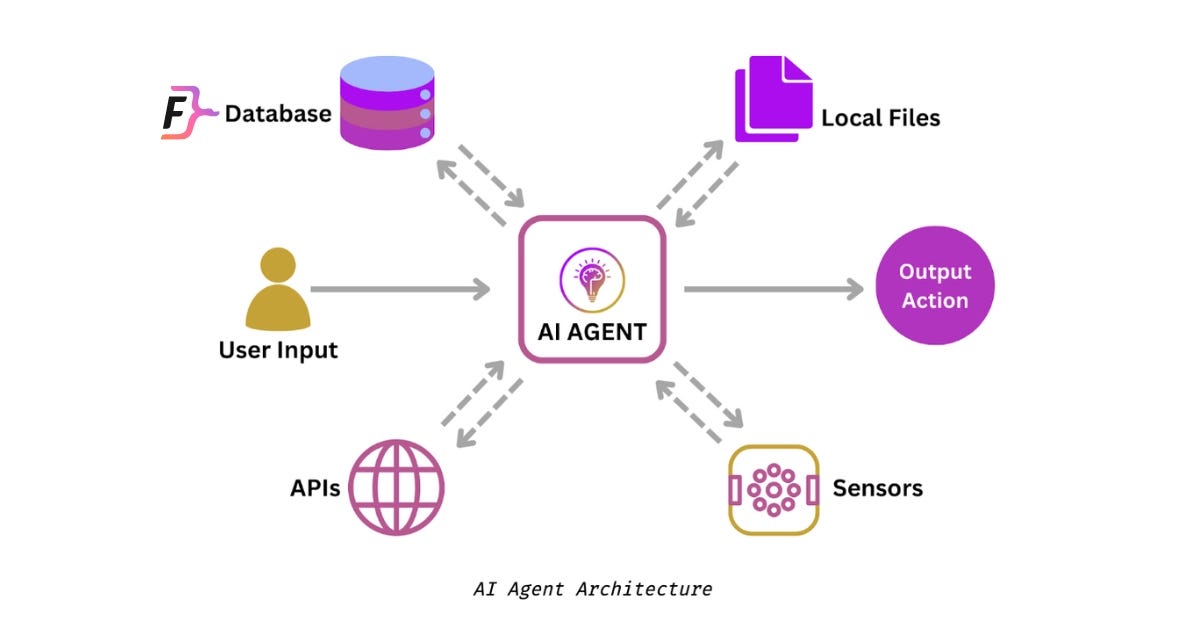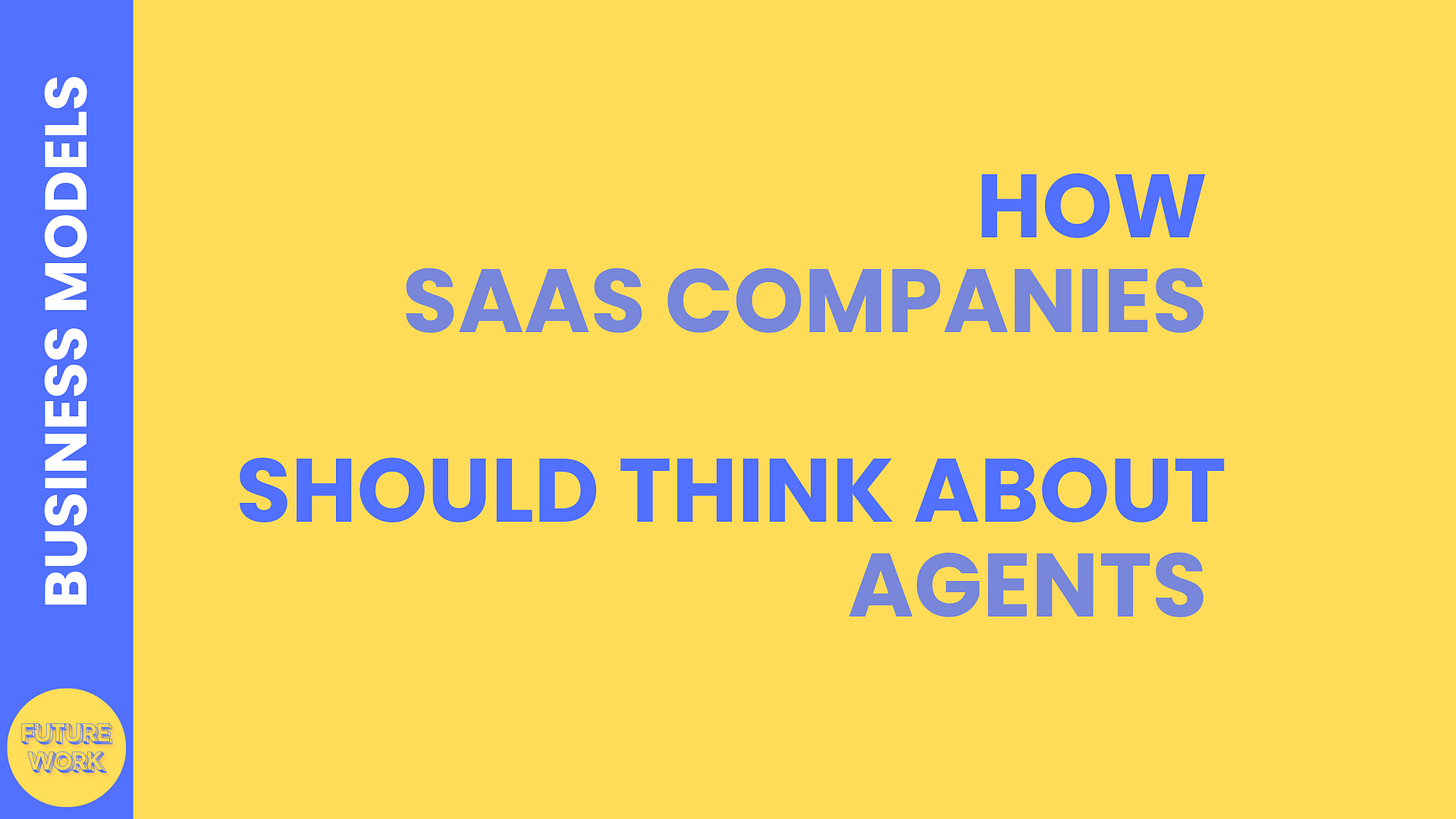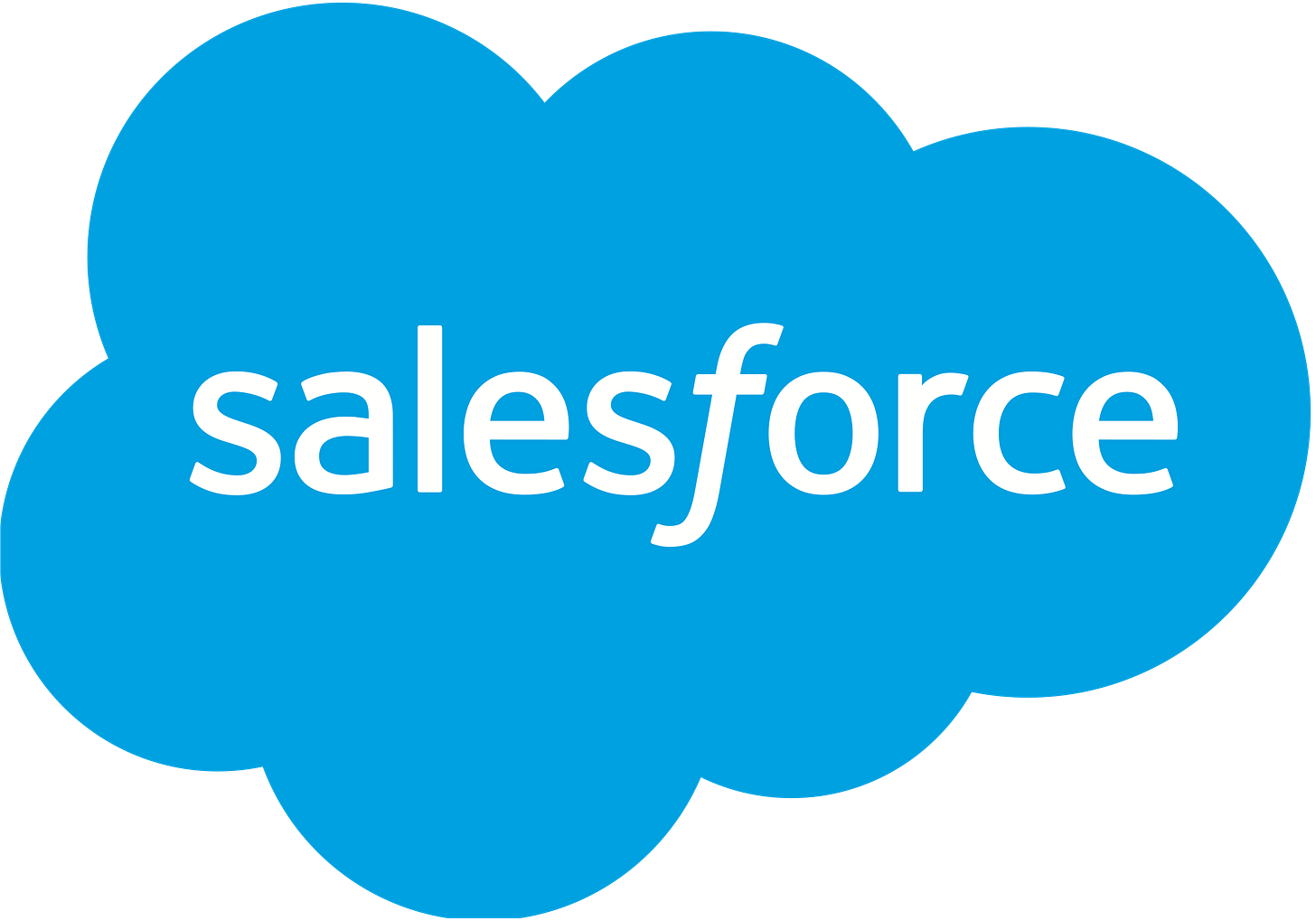Part 3: The Future of SaaS UX is the Agent.
Who owns the agent that interacts across your systems will eventually own the customer and siphon away large pieces of value creation from SaaS companies that don't.
OpenAI's new Agent Builder tools mark a major shift in how software is built and used. Sadly, it also wiped out some really cool companies I love. As we explore in this article, AI agents are becoming the new user interface for software, marking a shift has massive implications for SaaS businesses. A battle among tech giants to control the primary AI agent that users interact with is already underway, forcing SaaS companies to rethink their strategic positioning before they get relegated to infrastructure providers.
This is Part 3 of a 3-part series about how SaaS is changing.
In Part 1 we explored the key threats to SaaS from the the CFO’s perspective.
In Part 2, we explored how the playbook has changed at some firms like Salesforce, Microsoft and HubSpot are adapting to the new climate.
But first, as aside… was Clippy a misunderstood trailblazer? #justiceforclippy
Agents as the interface layer
The rise of AI agents is changing how users interact with software. Think of the potential of the much hated Clippy or even early Siri. The idea was intoxicating: instead of clicking through menus or navigating dozens of apps, users could in theory tell an AI what they need and let it handle the rest. Microsoft CEO Satya Nadella has described this emerging paradigm as the “agent era,” predicting that AI agents will replace traditional software UIs and workflows altogether. Sure they don’t work so well right now, but the rate of AI progression is outpacing Moore’s Law. You can ignore them, but is that pragmatism or denialism?
An intelligent assistant could directly execute tasks (like updating records or pulling reports) by interacting with software on the user’s behalf, bypassing the clunky interfaces we use today. The end goal is a seamless, conversational user experience – one where telling an AI what outcome you want replaces learning how to operate each application’s interface.
This trend essentially puts a universal UX layer on top of all software. Instead of each SaaS product having its own UI, the agent becomes the single point of interaction. For instance, HubSpot’s CTO Dharmesh Shah introduced ChatSpot in 2023 as a way to let users work with HubSpot’s CRM through chat commands. He called this concept “ChatUX” – a chat-based user experience for accomplishing tasks in the CRM with natural language.

Rather than clicking through tabs to log a contact or fetch a report, you just ask the AI assistant to do it. Similarly, OpenAI’s new Agent Builder tools (the Responses API and Agents SDK) are explicitly designed to help developers create agents that handle multi-step tasks across applications via natural language. In effect, AI agents act as intermediaries between the user and the software backend – translating intent (“revise the due date for the integration workstream to 31 March and notify everyone”) into actions performed across one or more SaaS systems. This conversational layer reduces friction for users and can dramatically streamline workflows.

The implications for SaaS UX are profound. Traditional graphical interfaces and even mobile app screens start to matter less when an agent can handle the same functions through an API or by simulating clicks. An AI agent with access to a company’s suite of SaaS tools could, for example, prepare a quarterly sales dashboard by pulling data from Salesforce, analyzing it, and then posting a summary – all triggered by one user prompt. Early adopters are already reporting efficiency gains from this approach. In one headline example, Klarna decided to drop major SaaS platforms (Salesforce and Workday) in favor of building internal AI-driven tools, citing better flexibility and cost-efficiency of an AI-first approach over traditional software.
This kind of move shows how compelling the agent UX can be: if the AI layer can do the job, why pay for extra seats of a complex SaaS product? It’s a wake-up call that the value in software is shifting – from the application itself to the intelligence that uses that application on the user’s behalf.
Side note: I want to be clear that I’m not arguing that this is the ideal UX layer. I suspect we’ll interact for more by voice over the coming years and thus agents’ ability to parse natural language will change the game.
For now, I have the admit that reading LLM-generated essays neither motivates nor excites me - it feels like more homework and more to sift through, albeit different
The Battle for Primacy: Who Will Be Your (chosen) AI Assistant?
Unsurprisingly, tech giants and forward-thinking SaaS companies are now in an arms race to become the primary AI agent that users rely on. If an AI agent is the new interface, controlling that interface means controlling the customer experience (and the customer’s data flow). We’re seeing an intense battle for primacy as companies vie to have their agent be the one that sits on top of all others. A few prominent players illustrate this race:
Microsoft – Perhaps the most aggressive player, Microsoft is embedding its Copilot AI assistant across the entire product portfolio. There’s GitHub Copilot for code, Microsoft 365 Copilot for Office documents, and even Windows Copilot at the OS level. Microsoft’s vision is clearly to make Copilot a ubiquitous digital assistant for work. The company has positioned itself at the forefront of this shift, hoping that if you rely on an AI agent at all times, it’ll be theirs. Given Microsoft’s reach (Windows, Office, Teams, etc.), a Copilot that integrates with all your tools could become the first-stop agent for hundreds of millions of users.
Salesforce – Salesforce announced Einstein Copilot as a generative AI assistant woven into the user experience of every Salesforce application. Need to update an opportunity in CRM or pull analytics from Marketing Cloud? Einstein Copilot is meant to handle it via chat or voice. Salesforce is effectively trying to ensure that Salesforce’s agent, not someone else’s, mediates all interactions with their CRM, marketing, or support clouds. They even built Einstein Copilot Studio for customizing these AI interactions. By doing so, Salesforce not only adds value for users but also protects its turf – if your sales team starts asking a general AI agent to update Salesforce, Salesforce would rather that agent be Salesforce. (Notably, Salesforce is also integrating with Slack’s GPT and other systems it owns, aiming to present a unified AI front.)
HubSpot – The inbound marketing CRM player took a slightly different route by launching ChatSpot, a conversational CRM assistant powered by OpenAI under the hood. HubSpot’s founder openly built and beta-tested this “Agent.ai” concept with users, and it struck a chord – the agent surpassed 500,000 users in just its early months. The appeal is clear: especially for small businesses, having an AI helper to pull up contacts, draft marketing emails, or generate blog ideas within HubSpot can save time. HubSpot is betting that by offering an AI agent natively, they both attract new customers and prevent existing ones from drifting to third-party AI solutions. The fast uptake of ChatSpot indicates a strong demand for AI-as-UX in the CRM domain.
Others – Nearly every major SaaS or platform company is making a similar play. Google has introduced AI assistants like Duet AI for Google Workspace and is experimenting with an “Agents” concept (AgentSpace) for developers. Adobe built generative AI (Firefly) into Creative Cloud apps to keep designers from using outside tools. Smaller players like Notion, Asana, and Zoom have all added AI copilots/assistants within their products. Even startups are emerging with an “AI-first” UX from day one. The pattern is universal: no one wants to be just a back-end data source in someone else’s AI workflow. Owning the agent interface means you retain the customer’s engagement and can differentiate your service with unique AI capabilities.
The Commoditization of SaaS
Why this scramble to be the top agent? In a world where AI agents orchestrate tasks, the agent that the user talks to is effectively the new “platform”. Much like the web browser became the gateway to the internet, or mobile operating systems, and then App Stores, dictated which apps thrive, the dominant AI assistant could sit in between users and all software. Companies fear being disintermediated. If, say, a generic OpenAI or Anthropic-powered agent becomes the go-to assistant for business users, it might recommend whichever underlying tools are most effective, regardless of brand.
For example, an AI agent could automatically choose Google Sheets over Excel for a task if it’s more integrated, without the user even knowing. That’s a nightmare scenario for SaaS vendors – their product becomes a commodity API while someone else owns the customer relationship.
Hence the flurry of “Copilots” and “GPTs” branded by each company: it’s a fight to remain the face of the user’s workflow. As Gartner analysts have noted, the value in the AI era is moving up the stack, into the orchestration and interface layer. Every provider wants to occupy that high ground.
Strategic Choices for SaaS Firms: Integrate, Partner, or Fade Out
For SaaS founders and investors, these trends raise an urgent strategic question: How do we thrive when AI agents could sit between us and our users? Companies that made their name on great user-friendly interfaces must confront a future where UI is not the primary differentiator – intelligent automation is. There are a few paths forward, but all require proactive adaptation:
Option 1:Embrace and Integrate AI Deeply into Your Product.
The most straightforward choice is to build your own AI capabilities so tightly into your SaaS that your product becomes its own agent (or at least plays nicely with others). This could mean developing a proprietary assistant like Salesforce’s Einstein or HubSpot’s ChatSpot, or leveraging OpenAI’s Agent Builder tools to add an agentic layer on top of your features. The aim is to offer a conversational or autonomous mode of using your software. If your users can accomplish most tasks via natural language commands or automated agents within your app, you’re far less likely to be bypassed. Many SaaS firms are already moving this direction – providing AI copilots for their apps, integrating large language models to handle support queries, report generation, data entry, etc. It not only protects your user interface but can also make your product more powerful and sticky. As an added benefit, companies that successfully infuse AI can pitch themselves as more efficient and intelligent than legacy competitors (turning a threat into a selling point).
Option 2: Position Yourself as an Essential Backend (But Beware Commoditization)
Not every company will build a front-end agent to rival Microsoft’s or OpenAI’s, especially smaller SaaS players. Another strategy is to accept that the AI layer may abstract away your UI, and focus on being the best at what you do on the backend – essentially becoming a vital data or service provider for agents. For example, a SaaS accounting system might expose robust APIs or fine-tuned LLMs that agent platforms can tap into for finance tasks. The goal here is to ensure that whichever agent is in front of the user, it chooses to use your software under the hood because your functionality or data is superior. This is akin to being a very reliable microservice in an AI-driven workflow. However, this path comes with the risk of relegation to commodity status. If users don’t directly interact with your product, your brand and UX matter less, and price or performance becomes the only distinguishing factor.
As one discussion put it, if AI agents handle all user interactions, SaaS products could lose their front-end relevance and see their value reduced to mere data storage or execution engines. In other words, you become replaceable if a cheaper or faster API comes along. SaaS companies taking this route need to ensure they have unassailable strengths – for instance, exclusive data, network effects, or compliance certifications that agents will depend on. Otherwise, it’s a race to the bottom.
Option 3. Partner or Integrate with the Leading Agent Ecosystems.
A middle-ground strategy is integration: make sure your SaaS hooks into the popular AI assistants and marketplaces. This might mean developing official plugins for OpenAI’s GPT-4, integrating with Microsoft’s Copilot framework, or aligning with whatever agent standards emerge (as an example, Zoom’s AI integrations with Slack and Teams ensure it’s present when those agents are scheduling meetings or summarizing calls). By doing this, you sacrifice owning the interface, but you keep your service in the loop. For many SaaS products, being part of the conversation (literally) via someone else’s agent is preferable to being left out entirely.
The key is negotiating these partnerships smartly so that your SaaS isn’t just an interchangeable module. Perhaps you provide extended capabilities to the agent that others don’t, or you use these channels to funnel users back into your app for deeper functions. Essentially, this is about distribution – if you can’t beat the primary agents, join them in a way that still grows your user base or usage.
Can I sit this one out?
To the SaaS players out there, especially the new ones - what you can’t afford to do is nothing. Ignoring the rise of agentic AI isn’t a viable option. A wait-and-see approach runs the risk that an upstart or a big platform integrates AI in your space and leapfrogs the user experience you offer. We’re already seeing early signs: clients are questioning why they pay for “overpriced CRUD” software when an AI-driven solution could be leaner and smarter.
Investors are asking SaaS CEOs how their product will stay relevant in an AI-saturated workflow. In this landscape, a SaaS company that stubbornly sticks to its old UI and feature set could wake up to find itself reduced to a background utility, with an AI middleman owning the customer interaction.
To be clear, core SaaS functionality isn’t going away – companies will still need CRMs, ERPs, marketing tools, etc., and these have deep domain logic that AI agents alone may not replicate easily. But the way those tools are accessed and valued is shifting. The power is tilting toward whoever orchestrates the workflow and owns the user query. SaaS firms must decide if they will be the orchestrator, an optimized instrument in someone else’s orchestra, or an out-of-tune fiddle left in the case.
Looking Ahead: Key Questions for SaaS Leaders about their Agent Strategy
This AI agent revolution brings as many questions as answers. As a SaaS founder, executive, or investor, now is the time to pressure-test your strategy and vision for an agent-driven world. Here are some key questions to consider as you navigate the path forward:
Is our product ready for a world without a UI? If customers could bypass your interface tomorrow, would your underlying value still shine? What can you do to expose that value through AI-driven channels?
What unique data or capabilities can we offer to AI agents? Think about what makes your platform special. How can that be packaged for consumption by an AI agent so that agents prefer using your service behind the scenes?
Should we build our own agent or co-pilot? Would an in-house AI assistant add significant value for our users? If so, do we have the talent and resources to build it (perhaps using OpenAI’s new tools), and will it genuinely set us apart?
Which partnerships are critical if we’re not the primary agent? Identify the ecosystems (Microsoft, OpenAI, Salesforce, etc.) that overlap with your user base. How can you integrate or align with them so that your SaaS is plugged into the emerging agent networks rather than bypassed by them?
How will this shift impact our revenue model? If usage moves from direct logins to API calls via an agent, do you need to rethink pricing (e.g. usage-based pricing)? Will customers still pay for seats or will they pay per API call orchestrated by an AI? Consider experimenting early to find a sustainable model.
How can we avoid having our features eaten by other agents? In the early days of the app store, Apple used niche apps to understand gaps in their OS. The key example is the flashlight app - one day a quick money maker, the next deeply integrated into the core OS. How can we avoid this fate?
Lastly, I think it’s time to see Agents as a new distribution channel that could make-or-break our tool. It’s time to start optimizing your product for discoverability and interpretability with leading agent platforms now.
Final thoughts…
I don’t believe this is truly winner takes all. I envisage a world where 3-4 top agents win out over key functional domains. Co-pilot with core, horizontal apps like document creation and OS management, another for selling (perhaps Salesforce over the top of CRM and email marketing). Will there be 20? Maybe, but I can’t see many small SaaS players legitimately winning out here.
The coming years will be pivotal. We’re witnessing the dawn of a new interface paradigm in software – one where AI agents sit on top of SaaS applications as the conductors of business processes. Founders and product leaders should stay forward-looking and adaptive. Those who ride the agent wave by crafting a smart strategy (and perhaps a bit of luck) could find their products more indispensable than ever. Those who don’t may see their once-shiny SaaS app quietly fade into the background, as the AI agents take center stage.
Clippy, you were right all along.






